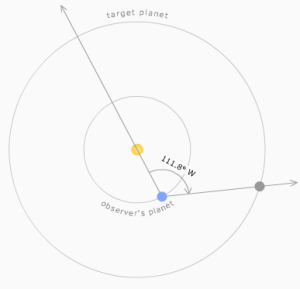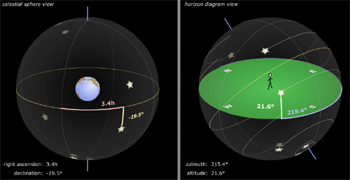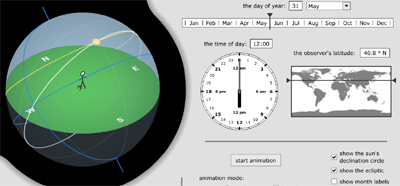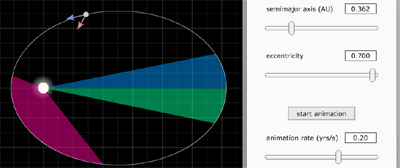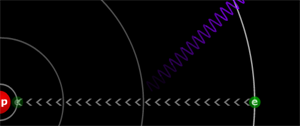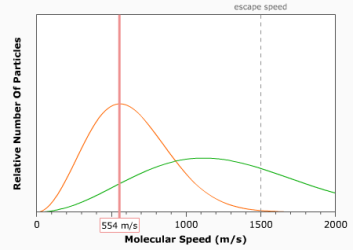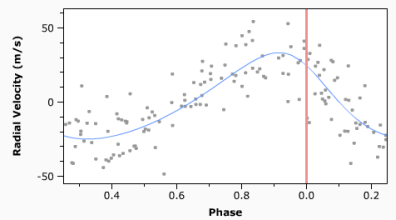Lab Descriptions
Solar System Models Module
The NAAP Solar System Models Module introduces the universe as envisioned by early thinkers culminating in a detailed look at the Copernican model.
Basic Motions and Seasons Module
This module covers three different, but related areas. Terrestrial coordinates and the celestial equatorial coordinate system are covered and are used to explore the motion of the sun and how it relates to seasons.
The Rotating Sky Module
This module introduces the horizon coordinate system and the apparent rotating of the sky. The relationship between the horizon an celestial equatorial coordinate systems is explicitly explored.
Motions of the Sun Module
This module reviews some of the material from Basic Coordinates and Seasons Module and The Rotating Sky Module and adds information to put all the pieces together for a more complete description of the motions of the sun culminating in the the Paths of the Sun Simulator. Computation of meridional altitude and stellar visibility are also introduced.
Planetary Orbit Simulator
This simulator is designed to facilitate understanding of Kepler's Three Laws of Planetary Motion as well as how velocity and force relate to the orbits. The user can manipulate the orbital properties of a fictional planet and read off various orbital parameters. Our solar system's planets can also be observed as a background for comparison.
Lunar Phase Simulator
This simulator demonstrates how the earth-sun-moon geometry gives rise to the phases of the moon as seen from earth. A distant view of an observer looking down on earth as well as a perspective of an observer looking into the sky are used in the the simulator.
Blackbody Curves & UBV Filters
This module demonstrates the basic properties of the blackbody curve and how temperature relates to blackbody curves. The temperature-color correlation of blackbody curves is explored through the concept of filters, which are also introduced in this module.
Hydrogen Energy Levels
This module introduces the concept of how quantum mechanics and light relate with respect to the Hydrogen atom. The Energy Levels simulator allows dynamic interaction with a Bohr model version of a single Hydrogen atom. The Thermal Distribution histogram gives a temperature dependent plot of occupied states for many, many atoms.
Hertzsprung-Russell Diagram
This module allows exploration of the HR Diagram including the relationship between stellar luminosity, temperature, and radius and how other stars appear relative to the sun. Students can place groups of stars on the HR Diagram including the brightest stars in the sky and the nearest stars to us.
Eclipsing Binary Simulator
This simulator demonstrates how information about stars which can not be directly observed can be inferred from a special class of binary stars – eclipsing binaries.
Atmospheric Retention
This module illustrates how the escape velocity of a planet and the distribution of the velocities of gas particles both affect whether or not a particular species of gas is retained.
ExtraSolar Planets Module
This module investigates the detection of extasolar planets by both the radial velocity and the transit method.
Variable Star Photometry
This module moves through the entire process by which astronomers study variable stars. Individual concepts that are studied include: properties of CCDs, image registration, blink comparators, aperture photometry, differential photometry, period determination, and light curve analysis.
